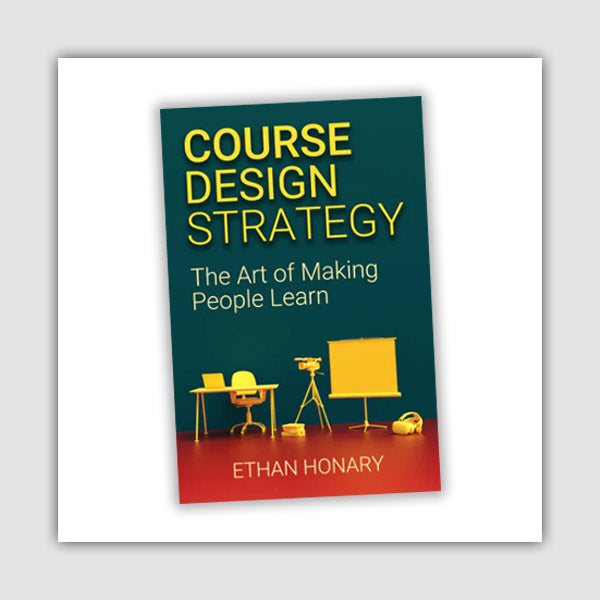In a Customer Service Skills course:
The trainer starts by explaining the principles of customer service. He gets excited and is carried away by explaining more. Delegates meanwhile are quietly listening, feeling like they are being lectured. Fifteen minutes later, the trainer seems to be still enjoying sharing his wisdom with the class. He is unstoppable. He is now excitedly explaining various techniques. Delegates have no choice but to simply listen, there is no interaction between the delegates and the trainer. Most delegates look bored and are not really absorbing the information. Many of them are looking around now, paying attention to what’s in the room, the decoration, other people’s cloth, etc. Gradually they all drift. Meanwhile the trainer is happy that this part is delivered so he can move on to the next bit…
In an Illustration Skills course:
People arrive and say hi to each other, but before long the trainer cuts them off and starts the course. The trainer starts talking about various artists. He shows a few samples on a projector. There is total silence. He carries on presenting more artists and styles. Still more silence. What’s happening? Are these people too shy to talk? Why is everyone so silent? Are they paying attention? Are they interested? How would the trainer know he is on the right track? Well, he has no idea, so he makes a guess and carries on expanding on a particular topic…
In a Spanish language course:
The trainer talks in English and explains what will happen in the course. Next, she explains a grammatical structure in English. People nod. The trainer says, “Do you know imperative?” People are silent. She explains the concept. Later, to practice vocabulary, she asks a person to read a passage. Once the passage is read, she asks, “Everyone understood?” There is silence and some nods. She says, “Good”. She asks the next person to read another passage. There is a word someone doesn’t know. He asks this from the tutor. The tutor explains the meaning and moves on.
Is the training working? People look bored. One person doesn’t seem to understand any of it, though he doesn’t ask. He is too embarrassed and doesn’t want to slow down the class. After all almost no one is asking, so he prefers to remain silent. The trainer carries on…
In a Microsoft Word course:
The trainer is teaching by projecting his laptop screen on a projector. He explains how to do something in MS Word. People look and try to memorise the sequence. He carries on with another technique to explain a new method. Some people look bored. Others look totally stressed out as they cannot keep up with the complexity and different options in the software. Halfway through, they even stop taking notes. Later, they cannot remember a thing. Meanwhile, the trainer carries on explaining more techniques…
In a Photoshop Skills course:
The trainer explains how to carry out a particular effect. People look at the trainer’s instructions on the projector and think it is fairly logical and obvious to follow the sequence. When it is their turn, they get completely mixed up. Almost no one remembers the complete sequence from memory. Delegates are baffled and somewhat embarrassed to ask. Some ask the person next to them. Meanwhile, the trainer wants to get on with the next sequence and is impatiently waiting for delegates to complete their tasks. She thinks she has covered a fairly simple technique, so if they are struggling she should probably skip the more advanced content later on. After all, she has a lot to cover…
What Is Happening in All of These Training Courses?
The above situations are all too familiar. Despite all the advances in training methodologies, the scenarios are still way too common. There is no doubt that these courses will not have a long lasting effect on participants. There seems to be a common pattern; that the trainers are all missing one crucial aspect of training.
And this is not about using a magic instructional method; it is about a simple technique you can use in conjunction with any methodology.
Let’s examine these scenarios in more detail. In the customer service skills course, delegates are lectured. They listen up to a point, but then start drifting. There is no engagement. There is no need to listen. There is no incentive to learn; only attend the course, be physically present. It goes in from one ear and out the other. Lectures in universities and schools are followed by exams which is a strong incentive for student to pay attention and learn. If a training course which doesn’t usually have an exam is delivered as a lecture, the chances are very high that no one will remember a thing a week later.
In the illustration skills course, the reason that people don’t talk is not because they are shy; it is because they have no reason to say anything. The trainer is treating the class as a lecture and the audience, through years of experience have adopted the role of listeners in a lecture. Once the audience goes into listener mode, even when asked directly, they hesitate to reply. People feel self-conscious to break the silence and the trainer has done nothing to help this or encourage them to talk.
In the Spanish Language course, the trainer is trying to engage with the audience, but she is doing it the wrong way. She is asking closed questions. When you ask the class, “Do you know X?”, the most likely reply is total silence. People don’t like to volunteer their lack of knowledge about something. They would rather say nothing. Those who know may simply nod or be reluctant to make others feel bad about not knowing something. A closed question such as this doesn’t get you anywhere. The trainer should ask open questions; “What is the meaning of X?” Similarly, when someone asks a question on the meaning of a word, she doesn’t have to directly answer it. Instead, she should always aim to maximise the overall engagement in the class. She could say, “Who can tell me what X means?” The trainer is now forcing others to constantly pay attention and help each other as the course progresses.
In MS Word and Photoshop training courses, the trainers are simply focused on lecturing a sequence of moves without getting the delegates to try them out. The trainer can benefit from methods such as Try, Practice, Demonstrate to maximise learning by getting the delegates to practice while he shows the sequence. He can also test them using small memory exercises.
What Is the One Thing You Need to Consider?
In all of these courses, the problem is that the trainer doesn’t ask many questions and doesn’t know the strength and weakness of participants. If you have to get one thing absolutely right, it is that you should ask open questions all the time.
You need to ask to find out what delegates know, so you can deliver at the right level.
You need to ask to find out what they like to know more about and what they want to skip.
You need to ask to engage.
You need to ask so they don’t drift.
You need to ask to break the silence and encourage delegates to talk.
You need to ask so they answer and hence verbalise the lessons there and then during the course which will help their memory.
In short, remember that:
If you don’t ask, you won’t know. If you don’t ask, they won’t learn.
Comments
By ben vel @ Tuesday, March 12, 2013 7:52 PM
Very useful article. I would also suggest that one needs to know the delegates before really starting the training so introductions and expectations are very important parts of the training process.
By Chris Bartlett @ Monday, September 29, 2014 6:13 AM
very good article , this is a mistake that many trainers make
By Renjit Mathew @ Tuesday, November 12, 2019 12:09 PM
A very true point that the facilitator has to ask questions and keep the delegates engaged.Well articulated article.Thank you for sharing.
By Ehsan Honary @ Thursday, November 14, 2019 4:01 PM
Thank you Renjit. Glad that the article has been useful.
Soft Skills Training Materials
Get downloadable training materials
Online Train the Trainer Course:
Core Skills
Learn How to Become the Best Trainer in Your Field
All Tags
Training Resources for You

Course Design Strategy
Available as paperback and ebook

Free Training Resources
Download a free comprehensive training package including training guidelines, soft skills training activities, assessment forms and useful training resources that you can use to enhance your courses.

Our Comprehensive Guide to Body Language

Train the Trainer Resources
Get Insights - Read Guides and Books - Attend Courses
Training Materials
Get downloadable training materials on: Management Training, Personal Development, Interpersonal Development, Human Resources, and Sales & Marketing














Leave a comment
All comments are moderated before being published.
This site is protected by reCAPTCHA and the Google Privacy Policy and Terms of Service apply.